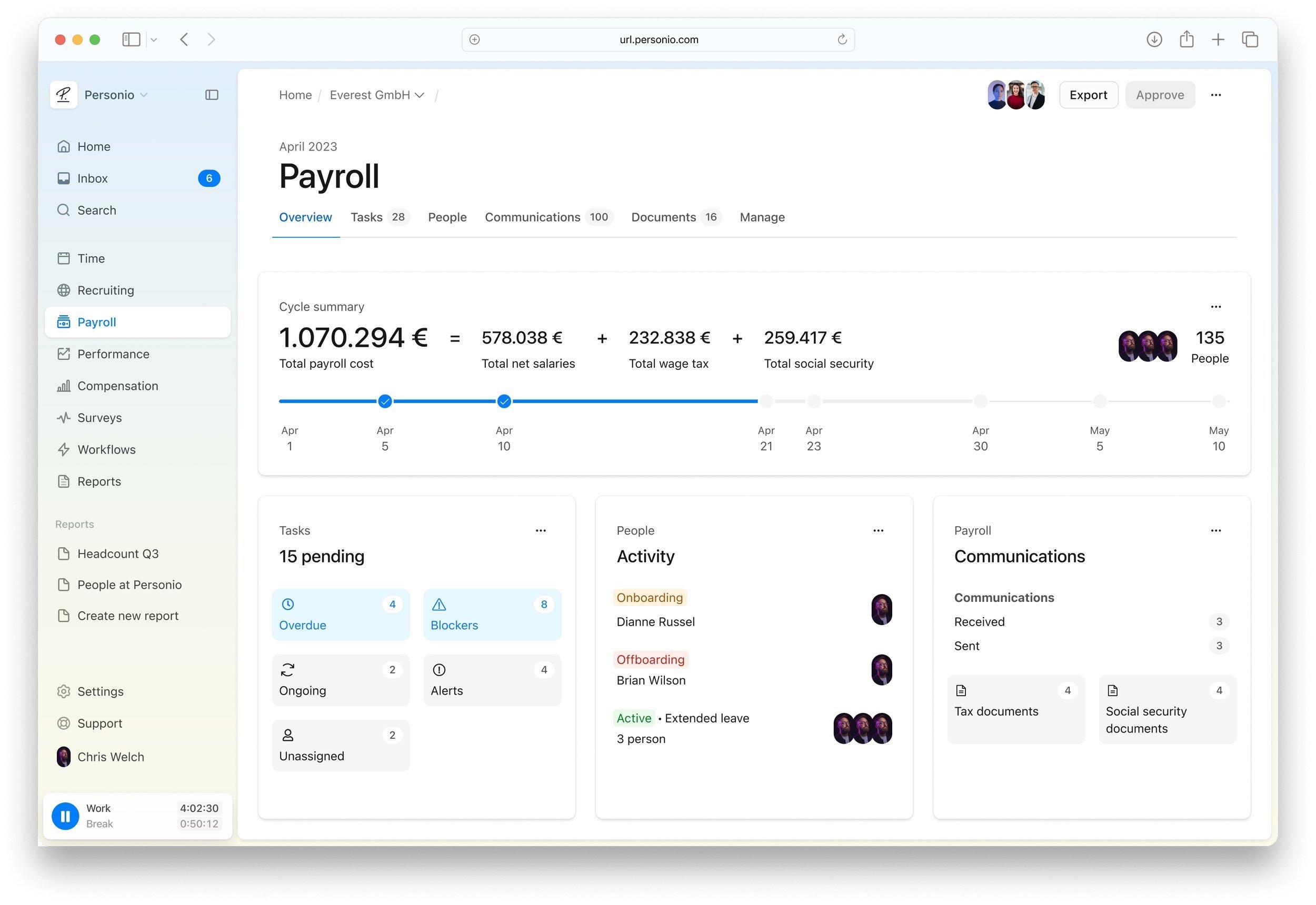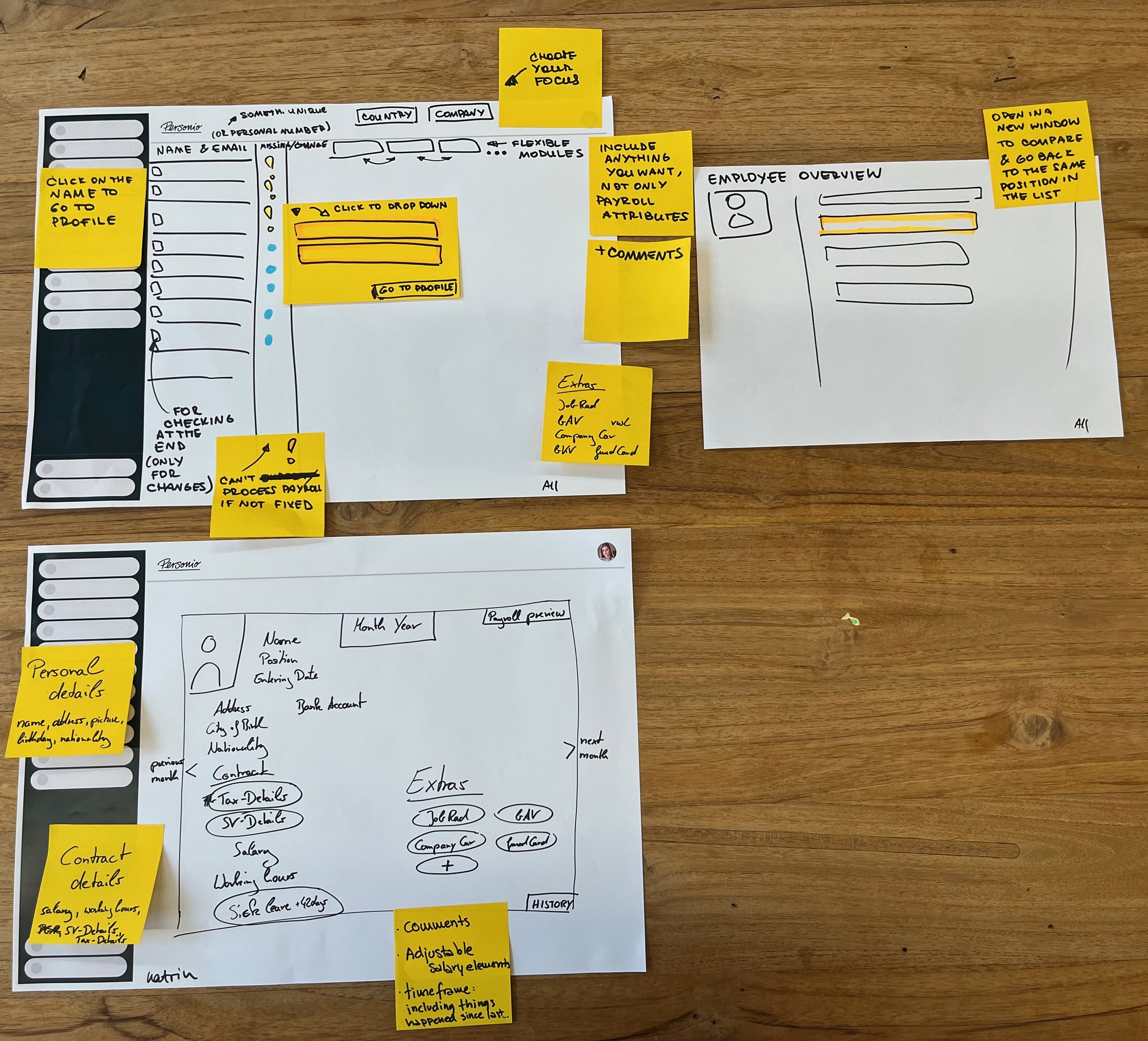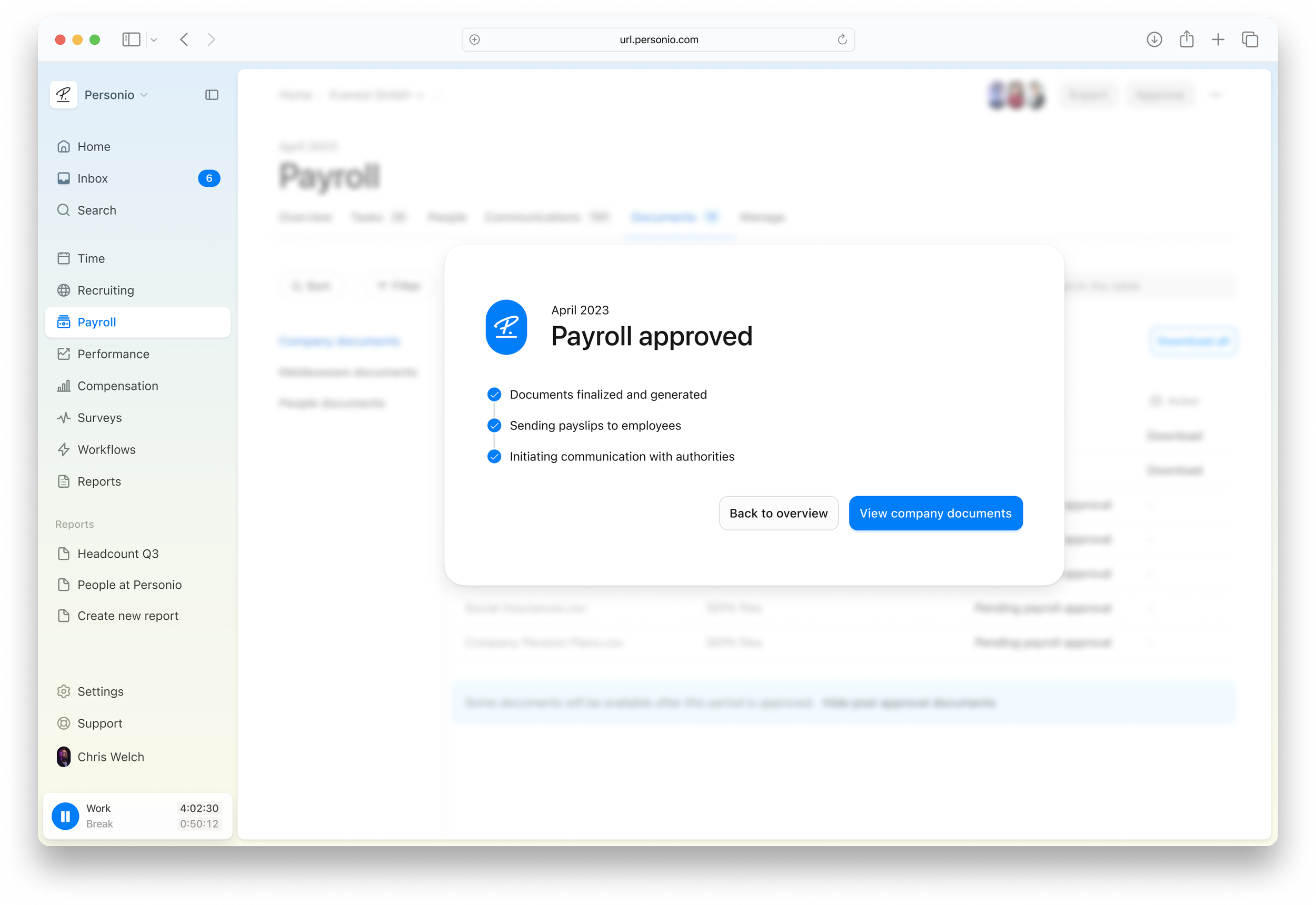Redefining Payroll Experience
Enable non-experts to run payroll with confidence
Payroll Managers must prepare payroll correctly and on-time every month, so that employees and authorities get paid. It is enormously stressful, as the process is manual, prone to errors, and time critical. Moreover, it is also very emotional due to the effect on employees’ satisfaction and wellbeing. There is an opportunity for a solution that gives a sense of confidence, control and peace of mind to HR Managers, so that they can focus on what they want - strategic HR and payroll topics.
Goal - Creating a market leading and scalable payroll preparation UX for mid-size companies.
Collaborators - Ahmad (Design), Felix (Product), Anna (Research), Cris (Design), Pedro (Design), Yuri (Engineering)
My Role - Discovery, design, validation in collaboration with cross functional team



As a Product Designer at Personio, I was tasked with enhancing the payroll experience within their all in all HR ecosystem. With the existing payroll product in Beta and being used by a selected group of 12 customers, the challenge was to elevate the usability and functionality of the platform. This case study delves into the challenges encountered, the collaborative approach adopted, and the innovative solutions devised to meet user needs and elevate the overall product experience. My role involved leading a multidisciplinary team consisting of UX researchers, content designers, product managers, and fellow product designers.
The Challenge
Understanding of system architecture and data integration across various HR verticals was imperative. The initial stakeholder request to customize the payroll table was met with skepticism. I believed that if users had to modify the interface to find essential information, it indicated a deeper usability flaw.
Identifying User Pain Points
Prior research and recent interviews revealed several key pain points faced by users:
Fear of making errors due to the sensitive nature of payroll management.
Lack of confidence in the system and data, leading to double checking.
Manual, complex processes and steep learning curves, particularly for junior managers.
Managing multiple data sources and dynamic changes impacting payroll.
Ideation and validation
Recognizing the need for a simplified review and approval process, we embarked on a journey to reimagine payroll management. Through co-design, we conceptualized a step-by-step wizard approach. However, while this resonated well with junior managers, experienced users found it too rigid for the dynamic nature of payroll processing.
Co-creation workshop
To bridge this gap, we leveraged a customer workshop to solicit direct input. Collaborating with three diverse customer groups, we synthesized their insights into a cohesive solution. The result was a tab-based interface encompassing key aspects of payroll processing, addressing users' needs for flexibility and control.
Objectives: Strengthen confidence and deepen understanding of the opportunities within the monthly payroll preparation process; get feedback on our emerging design directions.
Format: Co-creation workshop in Munich with 14 users (from companies with 11-350 employees) & 9 Personios (Product, Design & Engineering; Pay Prep. & Personio Payroll) making 3 groups.
Outcomes: Higher certainty in the design direction for the payroll preparation experience; much stronger customer empathy & understanding of the user pains & JTBD; productive cross-tribe collaboration.
Design Evolution
Central to this evolution was the introduction of a tab-based interface, a paradigm shift that transformed the user experience. Customers insights fueled a redesigned solution featuring a comprehensive dashboard, task management, payroll issue identification, and streamlined communication with the authorities.
Tab-Based Interface: A Paradigm Shift
Departing from conventional linear approaches, we embraced a tab-based architecture to offer users unparalleled flexibility and control. Each tab was meticulously crafted to address specific user needs and streamline key aspects of the payroll process.
Overview Tab: Providing users with a bird's-eye view of payroll status, pending tasks, and upcoming deadlines, the Overview tab served as the nerve center of payroll management.
Acknowledging the diverse mental models of payroll managers across different organizational sizes, we tailored the Tasks and People tabs
Tasks Tab: Recognizing the importance of task management in ensuring timely and error-free payroll processing, we introduced a dedicated Tasks tab. Here, users could track, prioritize, and complete tasks with ease, streamlining the approval process and minimizing errors for tasks based mental models.
People Tab: The People tab to accommodate both individual-centric and bulk processing workflows. Resolving issues on a per-employee basis, users found a seamless and intuitive interface to meet their needs.
Documents Tab: German payroll with heightened compliance and documentation requirements, the Documents tab provided a centralized repository for essential paperwork, ensuring easy access and audibility for all payroll documents like payslips, SEPA files, and documents from the authorities.
Compliance Tab: Addressing the complex regulatory landscape, the Compliance tab offered users a comprehensive overview of compliance-related tasks and obligations, empowering them to navigate regulatory hurdles with confidence.
History Tab: Fostering transparency and accountability, the History tab offered users a chronological record of changes and approvals, facilitating reviews and fostering trust in the payroll process.
Release Plan
A strategic go-to-market plan was devised to incrementally introduce new features to customers. Breaking down the rollout into three milestones, we ensured a smooth transition from beta to general availability, all while maintaining focus on user needs and feedback.
Outcomes and Future Prospects
Our iterative and incremental approach yielded significant improvements in user confidence, visibility, and learning curves. While the solution remains in beta, initial feedback suggests a substantial enhancement in the payroll approval process. The introduction of the tab-based interface marked a pivotal moment in Personio's journey towards redefining payroll management. By aligning with user needs and preferences, we not only streamlined the payroll process but also laid the foundation for future scalability and innovation. With an eye on the future, we are poised to capture a significant share of 90 millions ARR in the billion-dollar payroll market.













